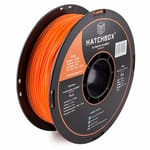What's Special?

Hatchbox is a filament brand based in the USA. It offers a large variety of filaments, ranging from everyday PLA and ABS to exotic blends.
Boasting high-quality materials, Hatchbox advertises a plus or minus 0.03-mm precision in all of its filaments (that’s right – all of them). Hatchbox materials are currently supplied by North Bridge New Material Technology, a Chinese manufacturer that also offers its own Kexcelled brand.
Hatchbox PLA is made with a blend of “plant-based materials and polymers,” offering a smooth finish while being more environmentally friendly.
It is available in a large variety of colors, both 1.75 mm and 3 mm, from which we chose a spool in white.
The Verdict

We tested our Hatchbox PLA on an Original Prusa i3 MK3S. The filament came very nicely packaged in a recyclable cardboard box, sealed in a plastic bag with a desiccant pouch. Unfortunately, the bag was not resealable, meaning you will need a dry box to safely store this filament in humid climates.
All of our prints were successful, having a very smooth finish with a nice gloss and uniform color.
Test #1: 3DBenchy
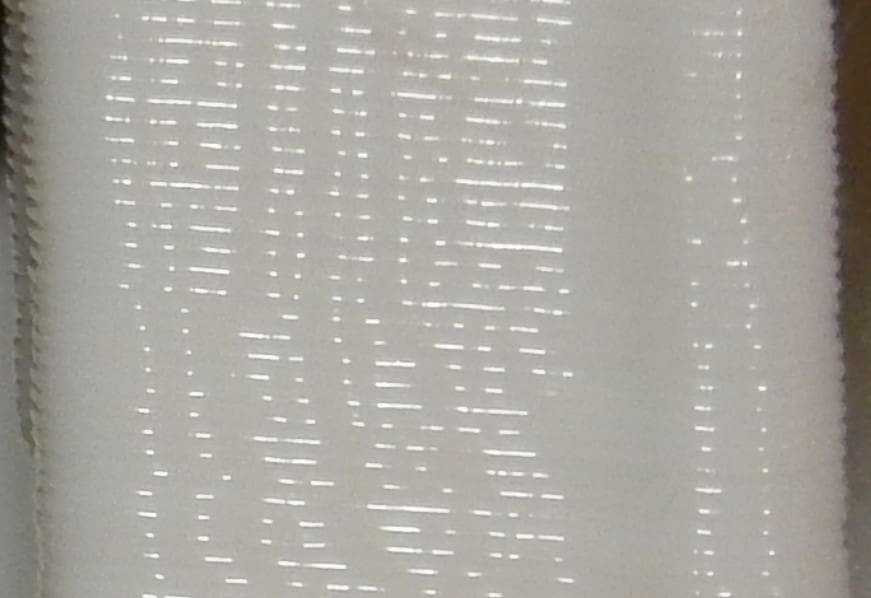
Our first test was the ubiquitous 3DBenchy. We had no issues while printing, with excellent bed adhesion and no warping. All of the details are very crisp and clean, however, our model had some slight stringing.
A close-up look shows clean, uniform layer lines with superb adhesion.
Test #2: "Cloud Storage"
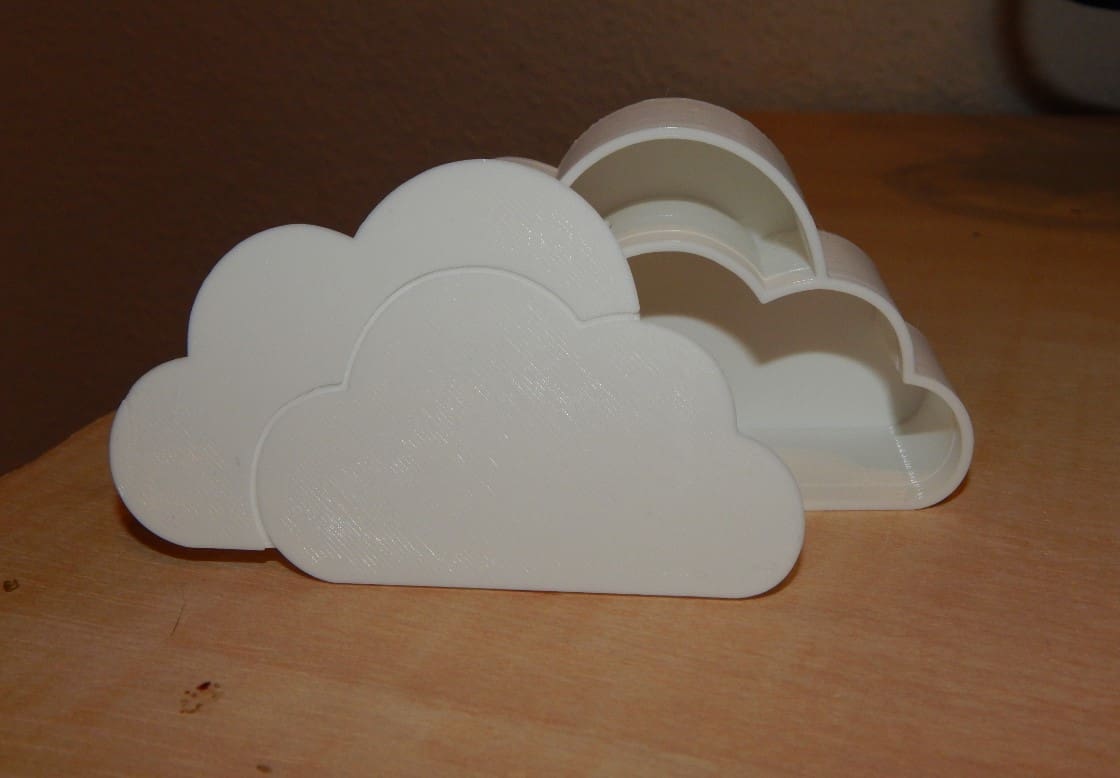
Our second test print was the Cloud Storage box by Murray Clark. A relatively simple print, this should reveal any issues with layers or surface finish.
All said and done, the finished product came out very well, with only a slight bit of warping from the bed on one edge. There were no visible strings between the two parts of the box, and the lid fits perfectly into the base.
Test #3: Moon
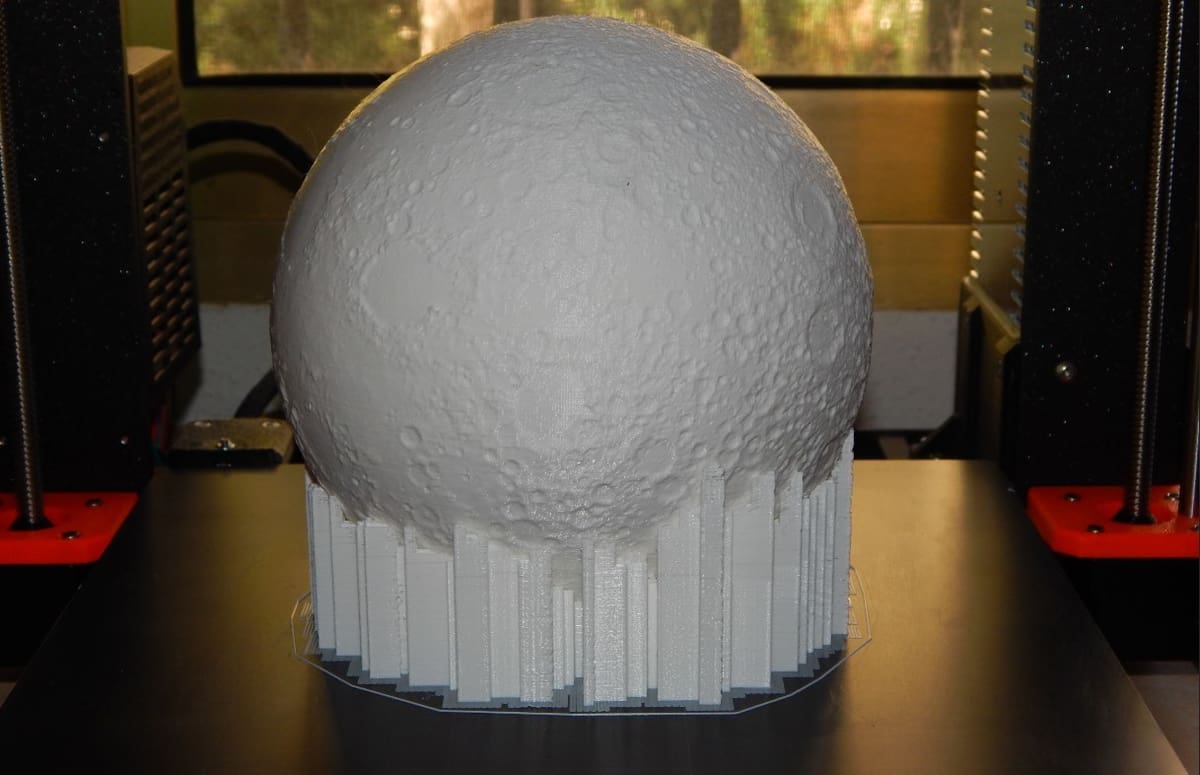
Our third test, inspired by the color of the filament, was a massive 6″ Moon Lamp by Leung Chan, which doubles as a lithophane. For this print we used a lower 0.1-mm layer height to ensure there were no holes in the outer shell. All other print settings were the same as in our other tests.
This model printed extremely well, with every detail coming out nearly perfectly. The supports snapped off very easily, leaving no traces and without marring the surface finish. A truly stellar print, if we do say so ourselves.
Final Thoughts
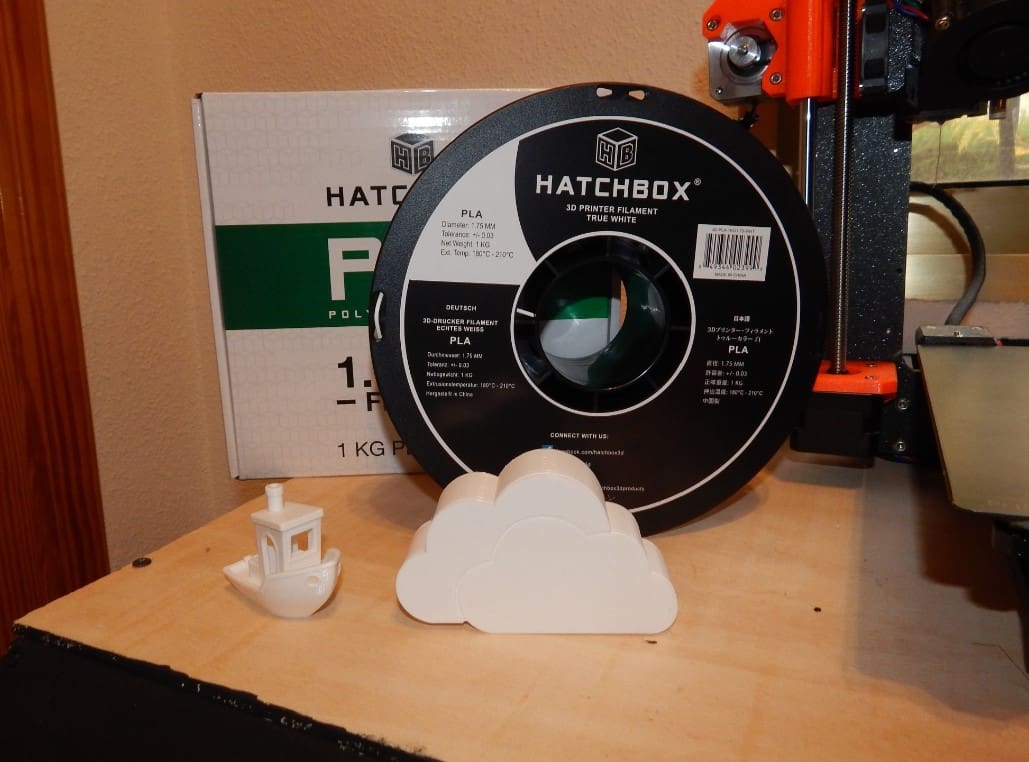
Overall, we really liked this filament, and enjoy printing with it. There were no large issues while printing and all of our prints came out very nicely.
There was only a slight bit of stringing in our prints. However, all of the details turned out extremely well, and in the case of our third print, the supports came off very easily.
For those looking for a good 3D printing material at a low price point, we’d certainly include Hatchbox PLA on our list of recommendations.
Specs & Settings
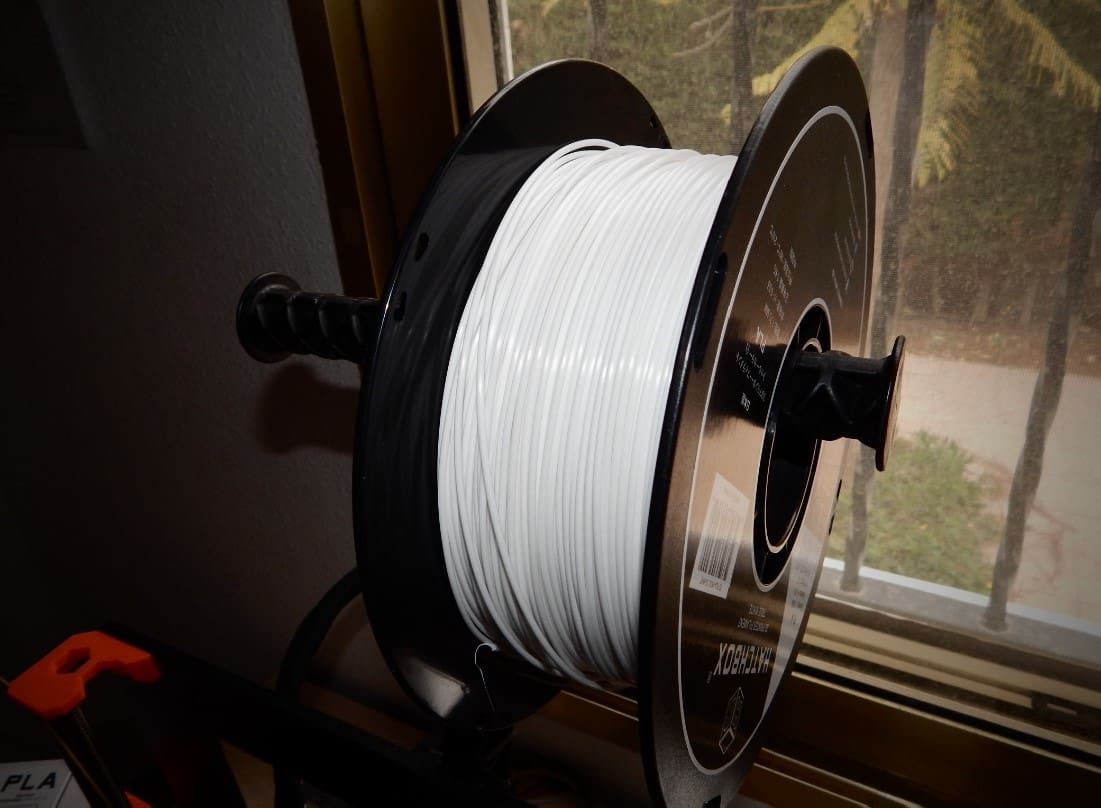
Being PLA, this filament will print well with most PLA profiles. However, with some fiddling, the results can go from good to great.
We 3D printed using the “Generic PLA” and “0.15 mm Quality” settings in Slic3r PE (except where noted otherwise), with the following changes:
- Nozzle temperature: 195 °C
- Bed temperature: 60 °C
The manufacturer’s specs and settings are as follows:
- Nozzle temperature: 180-210 °C
- Filament diameter: 1.75 or 3 mm (±0.03 mm)
How We Review
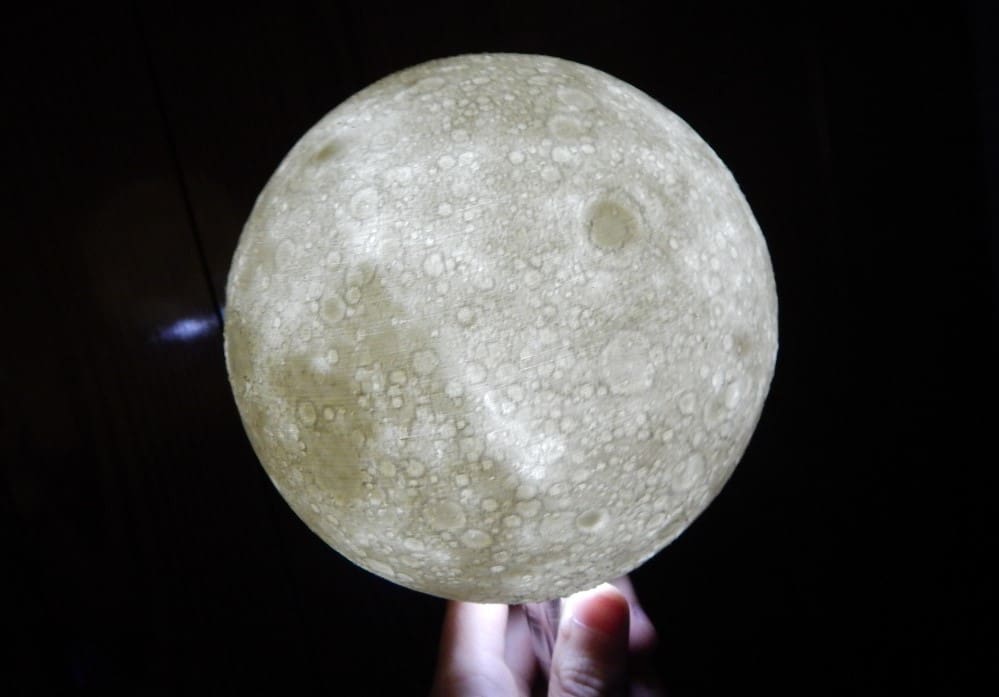
For those curious about how we got to our conclusion, we review filaments using the following guidelines:
Each and every spool is brand-new and unopened.
Our first print is always a 3DBenchy. We use this to check for any inconsistencies in quality, color, and finish. After that, we print a few other models, the results of which we present to you. We slice the model using the latest version of Slic3r Prusa Edition. We do not post-process the prints in any manner; we simply remove them from the bed and cut off any support materials.
We start with the manufacturer’s recommended settings (where available). When the manufacturer offers a range of values, we go for the arithmetic mean. Therefore, if we are given a printing temperature range of 200–220 ºC, we would print at 210 ºC (unless noted otherwise).
For this review, we used an Original Prusa i3 MK3S in stock configuration. Statements regarding print quality are based on the printer’s ability and reputation to successfully print a wide variety of other filaments and models.
We would like to mention that every spool of filament can be slightly different, and filaments often vary greatly even within a small range. Simply fiddling with a single setting like retraction can have huge effects in print quality. This can make the difference between a disastrous fail and a wondrous success.
So, if you own a spool of this filament, we invite you to contribute in the comments below! Did you manage to get your prints to turn out? Did you have an interesting or strange experience? Let us know – we’d love to hear from you!
Feature image source: Emmett Grames / All3DP
CERTAIN CONTENT THAT APPEARS ON THIS SITE COMES FROM AMAZON. THIS CONTENT IS PROVIDED ‘AS IS’ AND IS SUBJECT TO CHANGE OR REMOVAL AT ANY TIME.
